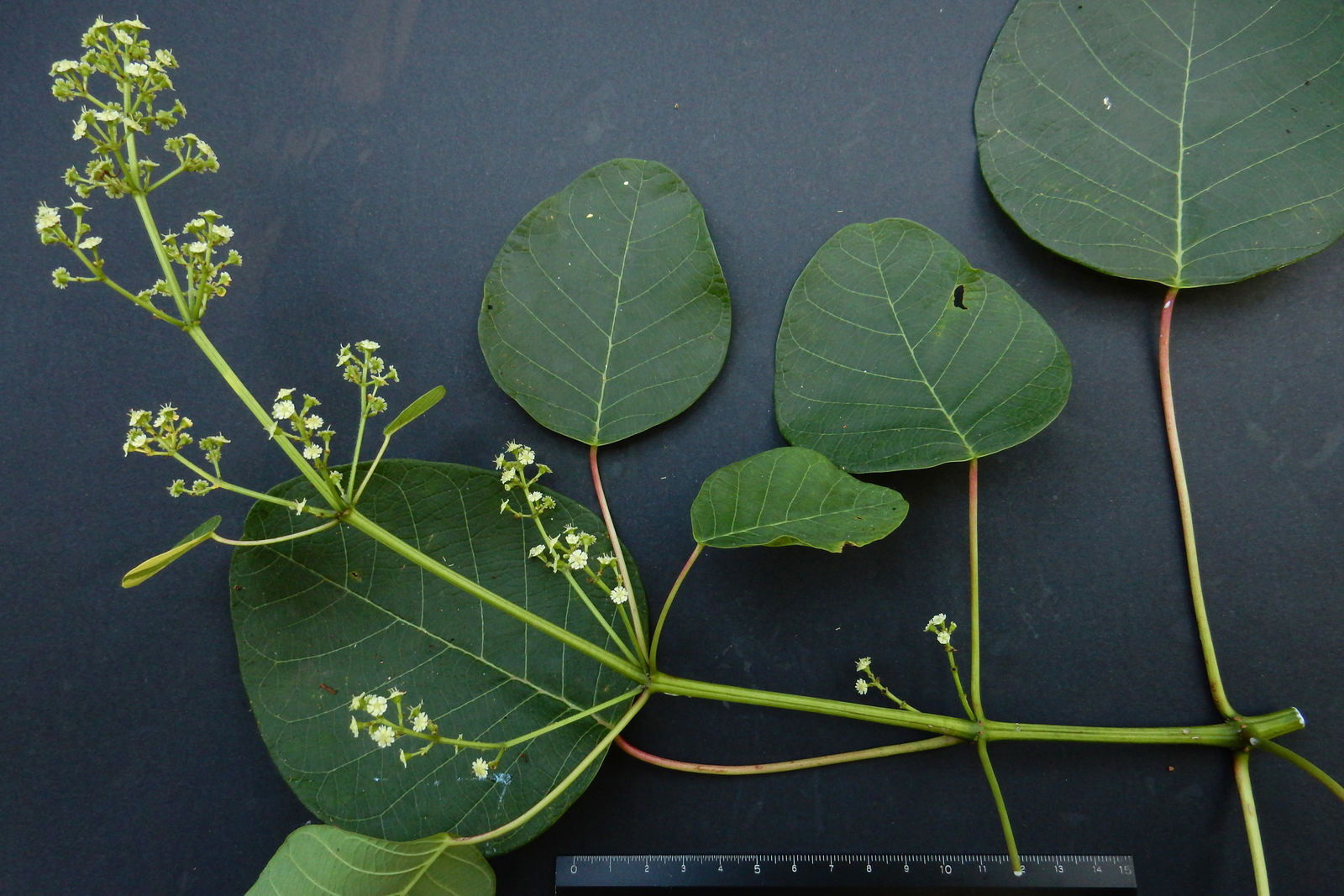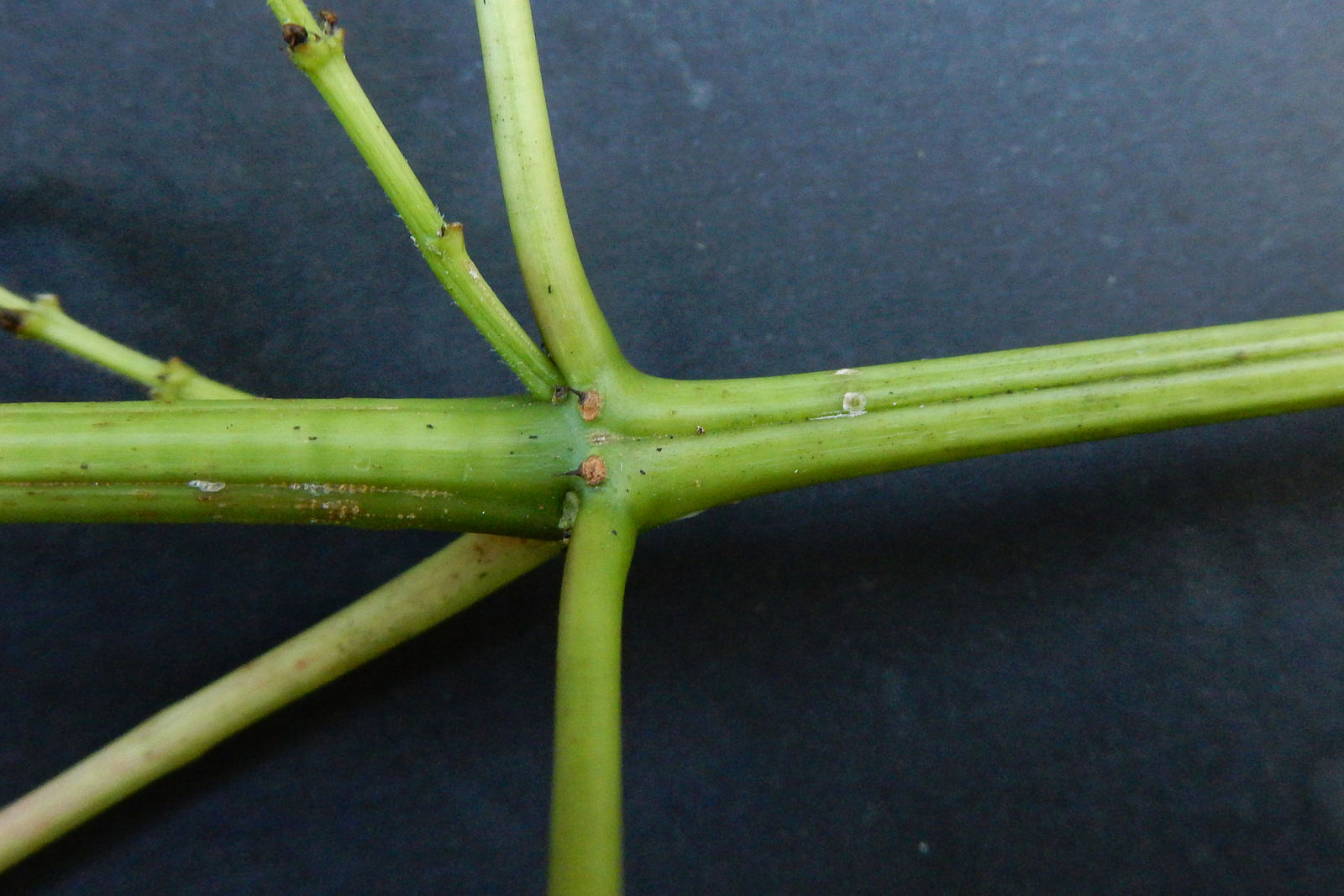Family: Euphorbiaceae
Author: L.
Bibliography: Sp. Pl.: 453 (1753)
Year: 1753
Status: accepted
Rank: species
Genus: Euphorbia
Vegetable: False
Observations: Mexico to Trop. America
Description
The tropical smokebush, scientifically known as Euphorbia cotinifolia, is a striking and diverse plant belonging to the Euphorbiaceae family. This plant stands out for its unique aesthetic appeal, with leaves that possess a rich, deep burgundy or dark purple color, often resembling the shades of a smoldering ember. This striking foliage lends itself beautifully to ornamental landscape designs, providing a dramatic splash of color and texture that contrasts well with other greenery.
Originally referenced in Sp. Pl.: 453 by the prominent botanist Carl Linnaeus in 1753, the tropical smokebush is native to regions ranging from Mexico to tropical areas of the Americas. Its natural habitat spreads across these warmer climates, where it thrives in conditions that mimic its native environments, typically preferring well-drained soils and plenty of sunlight.
This deciduous shrub can grow up to several meters in height, forming a bushy and rounded shape that makes it an excellent choice for hedges, borders, or as a focal plant in garden settings. Beyond its ornamental use, Euphorbia cotinifolia also requires careful handling due to its nature as a member of the Euphorbiaceae family. Like many species within this family, it contains a milky sap that can be irritating to skin and toxic if ingested, necessitating caution during planting and maintenance activities.
In addition, the tropical smokebush provides environmental benefits, serving as a source of nectar for pollinators and contributing to the biodiversity in garden ecosystems. Its vibrant leaves not only enhance visual appeal but also offer shade and shelter to smaller garden inhabitants.
In summary, Euphorbia cotinifolia, or the tropical smokebush, is a versatile and visually captivating plant that offers both aesthetic and ecological value. Its deep-hued foliage makes it a popular choice for adding dramatic flair to garden landscapes, while its origin from Mexico to tropical America highlights its preference for warm, sunny climates. With proper care and handling, this plant can be a stunning addition to any garden.
Common Names
Eng: caribbean copperplant, mexican shrubby spurge, tropical smokebush
Spa: cobrizo, cotinilla, lechero
Swe: koppareuforbia
En: Tropical smokebush, Caribbean copperplant, Mexican shrubby spurge, Caribbean cooper plant, Red spurge, Spurge
Zh: 紫锦木
Fi: Punatyräkki
Fr: Euphorbe à feuilles de fustet, Nivrée indien
Pt: Assacuí
Es: Lechero, Cotinilla, Cobrizo, Barrabás, Barbasco., Camotillo
Sv: Koppareuforbia
Zh-tw: 紫錦木, 非洲紅
Zh-hant: 紫錦木
Synonyms
- Alectoroctonum cotinifolium ((L.) Schltdl.)
- Tithymalus cotinifolius ((L.) Haw.)
- Aklema cotinifolia ((L.) Millsp.)
Distribution
- Bolivia (native)
- Brazil North (native)
- Colombia (native)
- Costa Rica (native)
- Ecuador (native)
- El Salvador (native)
- French Guiana (native)
- Guatemala (native)
- Guyana (native)
- Honduras (native)
- Mexico Central (native)
- Mexico Gulf (native)
- Mexico Northeast (native)
- Mexico Northwest (native)
- Mexico Southeast (native)
- Mexico Southwest (native)
- Netherlands Antilles (native)
- Nicaragua (native)
- Panamá (native)
- Peru (native)
- Southwest Caribbean (native)
- Suriname (native)
- Trinidad-Tobago (native)
- Venezuela (native)
- Bangladesh (introduced)
- Benin (introduced)
- Cayman Is. (introduced)
- China Southeast (introduced)
- Comoros (introduced)
- Dominican Republic (introduced)
- Hainan (introduced)
- India (introduced)
- Leeward Is. (introduced)
- Puerto Rico (introduced)
- Taiwan (introduced)
- Windward Is. (introduced)
Additional Images
Leaf
Taken Apr 2, 2021 by owen richard (cc-by-sa)
Taken Sep 3, 2022 by Doris Orellana (cc-by-sa)
Taken Sep 3, 2022 by Doris Orellana (cc-by-sa)
Taken Sep 28, 2021 by Eliel Penteado (cc-by-sa)
Taken Oct 8, 2019 by Febin Joy (cc-by-sa)
Bark
Taken Feb 23, 2020 by Marcelo Vallory (cc-by-sa)
Taken Sep 7, 2022 by Eduardo Marino (cc-by-sa)
Taken Feb 1, 2020 by reckziegel ramiro (cc-by-sa)
Taken Jul 14, 2018 by Hugo SANTACREU (cc-by-sa)
Taken Aug 18, 2022 by Catherine Vaneyck (cc-by-sa)
Flower
Taken Feb 5, 2021 by Sand Nazdy Sand (cc-by-sa)
Taken Oct 18, 2019 by L Morón (cc-by-sa)
Taken Jul 14, 2018 by Hugo SANTACREU (cc-by-sa)
Taken Apr 10, 2016 by Hugo SANTACREU (cc-by-sa)
Taken Nov 30, 2020 by Mallea Leticia (cc-by-sa)
Habit
Taken Jan 6, 2020 by Yury Kulikou (cc-by-sa)
Taken May 1, 2019 by Vega Camila (cc-by-sa)
Taken Jul 1, 2021 by معلومات فلاحية (cc-by-sa)
Taken Sep 28, 2022 by Zuriel Ruiz Vázquez (cc-by-sa)
Taken Jan 20, 2017 by Aeraaf Khuraishi (cc-by-sa)
Fruit
Taken Aug 24, 2022 by F Carlos (cc-by-sa)
Taken May 27, 2020 by Herrera Fernandi (cc-by-sa)
Other
Taken May 1, 2019 by Vega Camila (cc-by-sa)

© copyright of the Board of Trustees of the Royal Botanic Gardens, Kew.

© copyright of the Board of Trustees of the Royal Botanic Gardens, Kew.

© copyright of the Board of Trustees of the Royal Botanic Gardens, Kew.
Sources
- WFO (No URL)
- IPNI (No URL)
- GBIF (https://www.gbif.org/species/3067261)
- POWO (http://powo.science.kew.org/taxon/urn:lsid:ipni.org:names:346143-1)
- PlantNet (https://identify.plantnet.org/species/the-plant-list/Euphorbia cotinifolia L.)
Specifications
Growth habit>: Shrub, Tree























